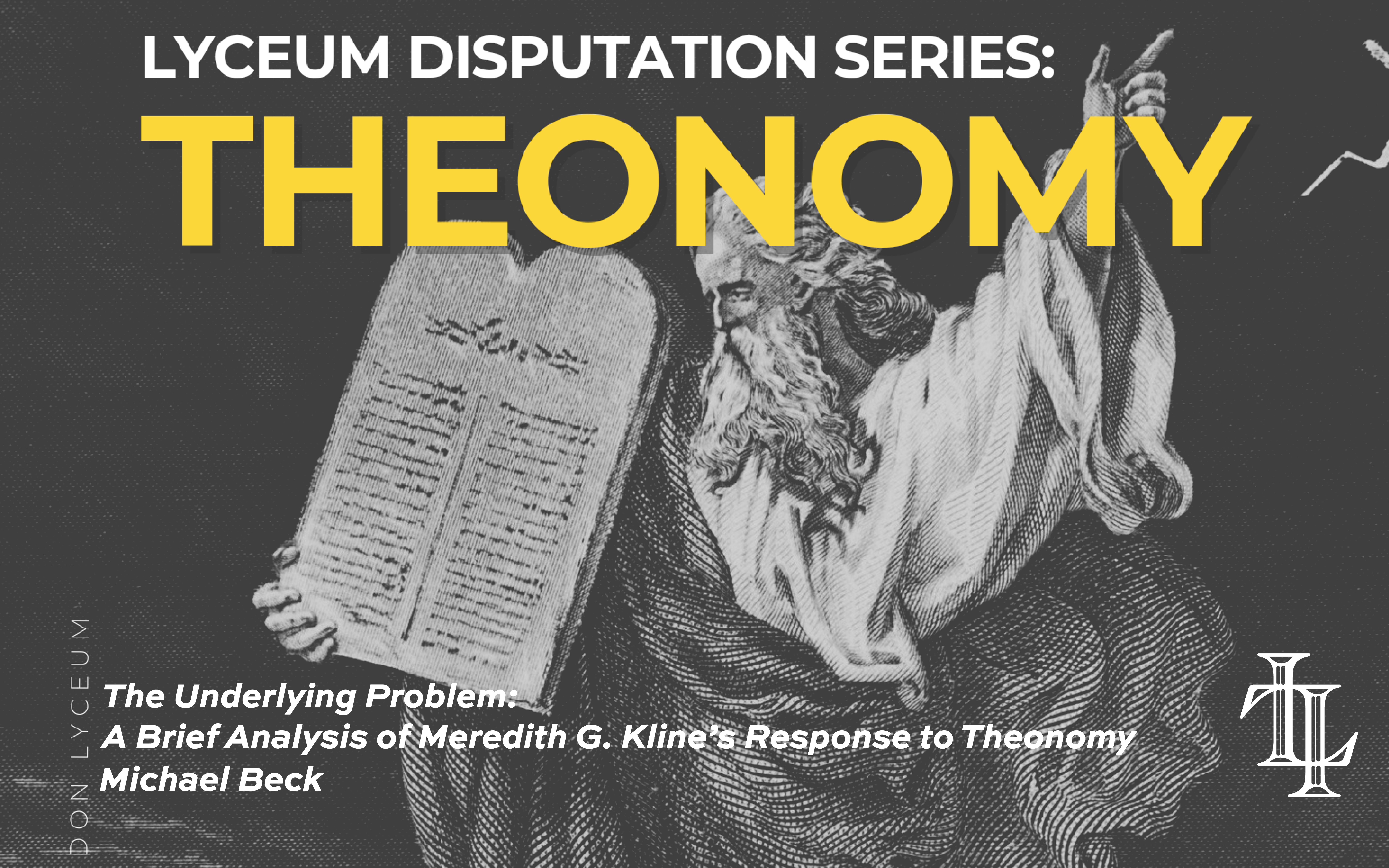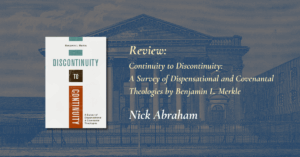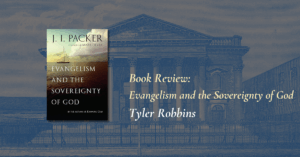Editor’s Note: This is part 1 in our Lyceum Disputation series considering the nature and validity of theonomy. Stay tuned for further installments. As with all our work, the London Lyceum publishes a range of viewpoints to encourage thinking.
[1]It has rightly been said that the issue of the law’s continuity “hits a sensitive nerve with Reformed people”.[2] Nowhere is this more evident than in the theonomy debate. Much of the rhetoric is inflammatory and only provides an example of how Christian debates should not be carried out. Unfortunately, Kline’s infamous response to theonomy does not rise above this general tenor. His rhetoric is often uncharitable and harsh. For example, he speaks of the theonomist position as a “delusive and grotesque perversion of the teaching of Scripture”[3] and a “misreading of the Bible on a massive scale.”[4]
However, it is also important to see that, in Kline’s mind, theonomy was not merely a matter of culture and politics. As time moved on, theonomist and reconstructionist theology came into further alignment and even dependence upon the Fuller-Shepherd understanding of law and gospel.[5] With exceptional insight, Kline perceived this connection and progression. In this regard, I argue that he was at least correct to indicate the seriousness of the issue in his famous response, Comments on an Old-New Error.
To further understand Kline’s reasoning, it is necessary to read his response to theonomy in light of his greater corpus, and particularly, in light of his other polemical essays.[6] One such essay concerned the Fuller-Shepherd school. Even though this explosive critique[7] occurred over a decade after his review of Bahnsen’s theonomic ethics,[8] the covenantal concepts at the base of both polemical endeavors are deeply intertwined. Moreover, the theological basis for both these responses arises from the core of Kline’s system and therefore they surface throughout his work. Even so, Kline’s stance against the Fuller-Shepherd argument, in particular, highlights the reason that his covenant system is set in such direct antipathy to the theonomy movement. To show the strength of Kline’s response when considered as a whole, the following will briefly present the important elements of this corresponding critique. Thereafter, its relevance will be analyzed in connection with the theonomy debate.
Fuller and Shepherd both repudiated the concept of a foedus operum as set in contrast to a foedus gratiae.[9] However, where Fuller rejected covenant theology altogether, Shepherd modified it to express one continuous unity extending from prior to the fall to the final consummation.[10] In this approach, traditional understandings of the works-principle in operation for both the first and last Adam are rejected, and the covenants are characterized by a single overarching principle of promise and obligation.
Concerning the original garden arrangement, focus fell away from Adam’s failure to gain an eschatological reward for meritorious obedience. Instead, it was placed upon Adam’s failure to persevere in obedience to receive the gracious gift of eternal life in Eden.[11] Kline argued that, if this revised understanding was applied to both the foedus operum and the pactum salutis, it would imply that Christ’s work as the second Adam was inherently inadequate. In other words, it would mean that not only Adam, but Christ, would require grace to receive the promise.[12] Yet, in Kline’s view, to the degree that this is granted, the covenantal basis for the Reformed doctrine of justification is also severely compromised.[13]
Kline argued that, instead of blending law and gospel to find continuity in God’s covenantal dealings with man, this continuity should be found within the traditional trifold schema of covenant theology. Even further, Kline sees this continuity evidenced in the priority of the law. This is displayed in the works-based covenantal arrangements in which both Adam and Christ stood as the federal representatives of humanity.[14] Christ earned his meritorious reward as the second Adam. This achievement means that, in the foedus gratiae, believers receive their justification by grace alone. It is bestowed on them through Christ’s active and passive substitutionary obedience under the terms of the pactum salutis.
Fuller, Shepherd, and the proponents of theonomy saw the Mosaic covenant as a perfect example of the way in which law and gospel blended or formed a continuum rather than a contrast.[15] However, Kline argued that this was because they had failed to see the typological purpose of Israel. In this regard, Kline maintained that while the “underlying stratum” of the foedus gratiae was unbroken from the point of the fall, Sinai was then superimposed as a works-based “typological overlay”.[16] Where the underlying grace principle pertained to the promise of eternal life, the superimposed works-principle involved a national tenure of Israel in the land of Canaan. This means that, at the underlying level, the grace principle contained no mix with law. Conversely, at the level of the typological overlay, the works-principle contained no mix with grace. In the light of this dynamic, Kline maintained that the Old Testament did not present a law-gospel continuum of any sort.[17] Attempts to argue to the contrary betray an erroneous conception of the role of the law within the plan of redemption.
In light of the above, the theonomic argument was also flawed. While there were certainly problematic implications of theonomy in relation to politics and cultural engagement, for Kline the issue of justification was always in view at the base of the matter. This point is important in providing context for Kline’s fiery polemical rhetoric. He was zealous to guard sola fide through both the active and passive substitutionary obedience of Christ. He also saw that if this doctrine was to be defended, a clear contrast between law and gospel was necessary.[18] However, for this contrast to be sustained, the Mosaic covenant, with its law principle, needed to be correctly understood in relation to the foedus gratiae.[19]
Having briefly considered Kline’s response in light of the undergirding issue of the doctrine of justification, the details of his review of Bahnsen himself can now be better analyzed. Though Comments on an Old-New Error was put forward as a review of Bahnsen’s Theonomy in Christian Ethics,[20] in fact, Kline does not provide a conventional critique at all.[21] For example, Kline does not present a careful consideration of Bahnsen’s particular arguments. Instead, he quickly broadens his response to include the larger implications of the greater theonomy movement. This highlights a point of weakness in Kline’s response and leaves him open to the accusation of mischaracterizing Bahnsen’s formulation.[22] For example, where Bahnsen keeps his argument concerning ethics separate from his argument concerning eschatology, Kline does not deal sensitively with this distinction.[23]
However, if Kline is to be critiqued for avoiding the particulars of Bahnsen’s argument, then it should also be noted that it is through this same tactic that Kline manages to avoid the many red herrings that were placed in his way. In this regard, his distillation of the theonomic argument should not too quickly be discounted as a “hasty generalization.”[24] Despite various in-house disagreements amongst theonomists, there is also a certain level of clear unity in their position.[25] Kline directs his attention to some of these greater points of unity, and in so doing, does not allow theonomists to hide behind the discrepancies and nuances of individual proponents. In this vein, if Bahnsen critiques Kline for misunderstanding the theonomist argument due to the lack of mention of its specifics, then it must be added that it is precisely Kline’s ability to see the functional implications of the greater theonomist argument that makes his polemic so effective.
Further to the above, Kline’s response is most forceful when it is considered as a whole. Because Bahnsen eventually embraced the Fuller-Shepherd position on law and gospel, Kline’s later critique must be seen to address the monocovenantal leanings of a theonomic position. Kline saw that a rejection of the law-grace contrast during the Mosaic period would inevitably lead to the failure to see this same contrast in God’s pre- and post-lapsum covenantal arrangements. As Kline puts it: “Rejection of the works principle in the old covenant tends to degenerate into a more general denial of the possibility of merit in the religious relationship and thus to a rejection of the principle of works in the original creation covenant with Adam.”[26]
Kline perceived that any weakening of the foedus operum also weakens the doctrine of justification. This is because what is said for Adam’s pre-fall covenantal arrangement finds its parallel in the last Adam’s covenantal arrangement. If Christ did not merit his reward according to works, the believer cannot be justified by Christ’s active substitutionary obedience. Simply put, if grace and works were mixed for both Adam and Christ, then grace and works must also be mixed regarding the justification of believers.[27]
As an example of the above, Kline takes special exception to Fuller’s statement that “for man, including sinless man, to entertain the idea that his obedience to God might serve as the ground of his receiving the kingdom inheritance would be to succumb to devilish pride”.[28] Here, Kline rightly points to John 17:4–5, where Christ himself described the nature of his covenant arrangement with the Father. Kline highlights that according to the Fuller-Shepherd theology, Jesus should have indicated that, “though he had not really earned the reward of glorification with the Father, he desired to have it nevertheless, as a gift of the Father’s grace”.[29] Of course, this is the very opposite to what Christ actually prayed. Christ clearly requested his reward based upon the work that the Father had given him to do. For this reason, Kline offers a strong caution to the acceptance of Fuller’s theology (Kline 1983:90).[30] In so far as this undergirds the case for theonomy, the same caution necessarily applies.
Bahnsen himself[31] shows that Kline’s concerns are well-founded. One can readily detect his concept of justification shifting from alignment with a traditional Reformed view. Rather than something that occurs in reliance upon the law-keeping of Christ, justification is thought of as God’s acknowledgment of faithful obedience at the point of death.[32] Even though Bahnsen is typically much more subtle than proponents like Gary North,[33] his embrace of a revisionist covenant system can yet be detected.
Although Murray initiated the monocovenantal system, he was able to retain his law-gospel antithesis and so also keep in basic alignment with Reformed orthodoxy regarding the doctrine of justification.[34] However, when the Fuller-Shepherd denial of a law-gospel antithesis was combined with a monocovenantal framework, Kline was correct to see it moved from being “a flaw” in biblical-theological formulation to “an error of massive proportions”[35]. Kline should be credited for clearly perceiving the intricate relationship between these issues. He showed that, beyond the controversy that theonomy raises concerning civil law, there are deeper concerns at play. This so, despite Bahnsen’s own caveats to the contrary.[36]
Kline’s response pinpoints the importance of seeing Israel as the divine exception to a background rule of gratia communis. Israel’s historical and covenantal context was uniquely intended to provide specific “redemptive-historical legibility” for the incarnation and death of Christ.[37] In other words, unless the Mosaic law was given its exact details and in its specific context, the meaning of Christ’s person and work would have proved “inscrutable”[38]. While this is important for Christology and soteriology, it is a deep problem for theonomy. This is because every letter of the Mosaic law was part of this specifically intended purpose. It was not designed to be altered for a different context.
Ironically, then, despite the many calls of theonomists to take the law seriously, Kline shows that it is in fact the theonomists themselves who do not take the specific wording of the law seriously enough. Despite their call to acknowledge every jot and tittle, theonomists are ready to mold the wording to better suit a differing and more modern context. In this, it should be noted that the Pharisees of Jesus’s day, who sought to do this very thing, fell under rebuke for their non-inspired situational modifications of the law (Matt 15:3).
The other problem that this presents for theonomy is that because the Mosaic law was purposed to foreshadow the Davidic reign of Christ, it contained no distinction between church and state. Certainly, it contained no principles of democracy. To emulate this arrangement today, a monarchical state would need to “operate in the name of the Redeemer” and become the “organized expression of the redeemed community”.[39] As Kline highlights, Bahnsen is understandably unwilling to emulate Israel on this point. However, by his reluctance, “Bahnsen lets in by way of the back door the fact that there is after all a decisive difference between the Israelite theocratic kingship and the civil magistrate.”[40]
In the light of the above problems with theonomy, Kline’s alternative seems far more plausible. Rather than viewing Israel as a political example for the nations, it should be seen as a foreshadowing of the final kingdom. Moreover, if Israel’s status is in any way acknowledged to be unique, then it seems equally necessary to set its uniqueness against the background of a more normative common grace operation as applied to all other nations.
Having considered the above, I conclude that Kline was indeed correct to issue a strong caution against theonomy. Further, his choice of language was understandably intense. In his corpus of writing, Kline shows convincingly that Israel alone was chosen to echo Adam’s covenantal arrangement. Further, Israel alone was chosen to foreshadow Christ’s redemptive eschatological kingdom. In the final analysis, theonomists do fail to account for this unique setting.[41] Correspondingly, they move away from the traditional Reformed law-gospel dialectic and instead embrace something more akin to a law-gospel continuum[42] with its homogenous understanding of the various covenants of Scripture.[43] As Kline has shown, it is this fundamental problem that has resulted in the theonomists’ failure to see the primary importance of typology in Israel’s law.[44] This, in turn, was the reason for their error in seeing the Israelite kingdom, along with its civil laws, as the normative ideal for politics in the world.[45]
[1] Taken from Beck M D L, Covenant Lord and Cultic Boundary: A Dialectic Inquiry Concerning Meredith Kline and the Reformed Two-Kingdom Project (Eugene, OR: Pickwick Publishers, forthcoming).
[2] VanGemeren, The Expositor’s Bible Commentary: Genesis, Exodus, Leviticus, Numbers, 5:146.
[3] Kline, “Comments on an Old-New Error,” 172.
[4] Cf. Kline, Glory in Our Midst: A Biblical-Theological Reading of Zechariah’s Night Visions, 53.
[5] Bahnsen, No Other Standard, 26–27; Bahnsen, Theonomy in Christian Ethics, 202, 232; Shepherd, The Call of Grace, 38–41; Schwertley, “The Auburn Avenue Theology: A Biblical Critique,” 1; Jeon, Covenant Theology and Justification by Faith: The Shepherd Controversy and Its Impacts; Bahnsen, “Greg Bahnsen and Norm Shepherd – The Final Word.”
[6] Reid, “The Mosaic Covenant,” 166.
[7] Kline, “Covenant Theology Under Attack”; Kline, “Of Works and Grace”; Kline, “Gospel Until the Law.”
[8] Kline, “Comments on an Old-New Error.”
[9] Fuller, Gospel and Law, 144–45; Shepherd, The Call of Grace, 25–26, 61–62.
[10] Fuller, Gospel and Law, xi, 63, 144; The Call of Grace, 61–63.
[11] Shepherd, The Call of Grace, 23–26; Schwertley, “The Auburn Avenue Theology: A Biblical Critique,” 1, 4–7.
[12] Kline, “Of Works and Grace,” 88.
[13] Kline, “Covenant Theology Under Attack.”
[14] Kline, “Of Works and Grace”; Kline, “Covenant Theology Under Attack.”
[15] Fuller, Gospel and Law, xi; Bahnsen, Theonomy in Christian Ethics, 184–85, 201–2, 235; Bahnsen, “Greg Bahnsen and Norm Shepherd – The Final Word”; Shepherd, The Call of Grace, 22, 28, 63.
[16] Kline, “Of Works and Grace,” 85–86.
[17] Kline, “Covenant Theology Under Attack”; Kline, Kingdom Prologue: Genesis Foundations for a Covenantal Worldview, 107, 109, 345.
[18] Kline, “Of Works and Grace,” 87–88.
[19] Kline, “Covenant Theology Under Attack.”
[20] Bahnsen, Theonomy in Christian Ethics.
[21]Cf. Bahnsen, “M. G. Kline on Theonomic Politics: An Evaluation of His Reply,” 2.
[22] Bahnsen, Theonomy in Christian Ethics, xxx–xxxi; Waldron, “Theonomy, A Reformed Baptist Assessment.”
[23] Bahnsen, “M. G. Kline on Theonomic Politics: An Evaluation of His Reply,” 3.
[24] Bahnsen, 12.
[25] North, Honest Reporting as Heresy: My Response to Christianity Today, 7; Longman, “God’s Law and Mosaic Punishments Today,” 43; Irons, “The Reformed Theocrats: A Biblical Theological Response,” 79–80.
[26] Kline, “Gospel Until the Law,” 435.
[27] Kline, “Covenant Theology Under Attack.”
[28] Kline, “Of Works and Grace,” 87.
[29] Kline, 90.
[30] Kline, 90.
[31] Bahnsen, Theonomy in Christian Ethics, 202, 232.
[32] Schwertley, “The Auburn Avenue Theology: A Biblical Critique,” 5–6.
[33] North, Unconditional Surrender, 208.
[34] Jeon, J K, Covenant Theology: John Murray’s and Meredith G. Kline’s Response to the Historical Development of Federal Theology in Reformed Thought, 331.
[35] Kline, “Of Works and Grace,” 87.
[36] Bahnsen, “What Is ‘Theonomy’?,” 1; Bahnsen, Theonomy in Christian Ethics, xxvi.
[37] Irons, “The Reformed Theocrats: A Biblical Theological Response,” 95.
[38] Irons, 95.
[39] Kline, “Comments on an Old-New Error,” 179–80.
[40] Kline, 180.
[41] Kline, 175.
[42] Bahnsen, No Other Standard, 26–27; Bahnsen, “Greg Bahnsen and Norm Shepherd – The Final Word”; cf. Fuller, Gospel and Law, xi.
[43] Bahnsen, Theonomy in Christian Ethics, 202; cf. Shepherd, The Call of Grace, 14–20, 25–36, 42–52, 73–77.
[44] Kline, “Comments on an Old-New Error,” 175–76.
[45] Kline, 176.
Author
-

Michael Beck (PhD, South African Theological Seminary) is from South Africa. In 2004, he and his wife were sent over to Wellington, New Zealand, to plant Gracenet Community Church. Mike has served as the preaching pastor at Gracenet since 2007. He also teaches Biblical Theology at Grace Theological College and co-hosts the Two Age Sojourner podcast. He has been married for 18 years and has three children.
View all posts



